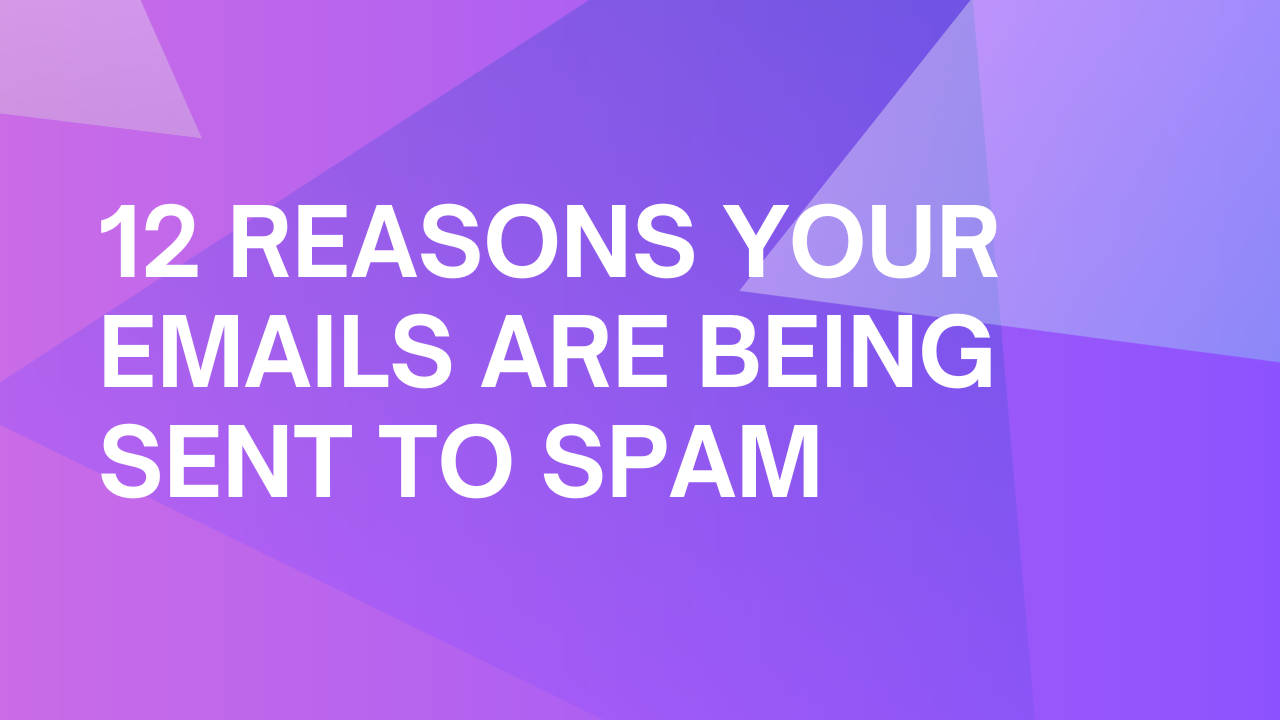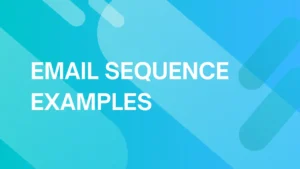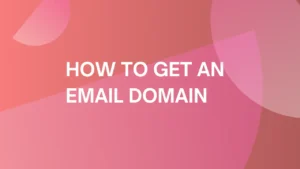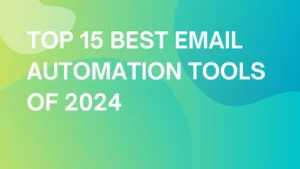
12 Reasons Your Emails Are Being Sent to Spam
When it comes to email marketing, by far the most important factor is reaching your target’s inbox.
However, email marketers often face a perplexing issue: emails going to spam.
Whether it’s a welcome email, a business proposal, or a regular newsletter, seeing your carefully written content end up in a recipient’s spam folder can be both frustrating and damaging to your sender reputation.
The reasons why emails go to spam are many and varied.
Understanding these reasons and how spam filters work is the first step towards having your messages reach your recipients’ inboxes.
Let’s jump in and take a closer look at why your emails might be going to the spam folder, and get you on the road to more successful email campaigns!
1. You Were Marked as Spam By Your Recipients
The simplest explanation for your emails going to spam is that one or more of your recipients have flagged your messages as spam.
This action alerts the recipient’s email service provider, which may lead to your future emails being sent directly to the recipient’s spam folder.
Spam Complaints
The more spam complaints your email messages generate, the more your sender reputation may suffer.
A poor reputation can make it challenging to reach your recipients’ inboxes, and you could find a higher percentage of your business emails going to spam.
Reviving Your Reputation
You can revive your reputation by having more positive interactions on your email, such as:
- Encouraging recipients to add you to their safelist.
- Limiting the number of emails you send to your subscribers to avoid triggering spam filters.
- Utilizing a reputable email service provider.
2. You’re Not Following HTML Best Practices
HTML emails are an essential tool for creating engaging content, but improper use can cause your emails to end up in spam folders.
Most email service providers employ spam filters that are highly sensitive to the formatting of HTML emails.
If not properly authenticated, even legitimate emails can end up in the spam folder. Following HTML best practices can prevent this from happening.
Best Practices
Here are some ways to make sure your HTML messages don’t trigger spam filters:
- Width management: Set the email’s width between 600 and 800 pixels so it looks good in preview and is easy to read.
- Image use: Avoid placing vital information solely in graphics as some email clients block images unless the recipient allows them to be displayed.
- Coding: Use simple coding and avoid JavaScript and Flash to prevent triggering spam filters.
- Font selection: Choose fonts that are easy to read and usable on any platform.
3. Your Email Contains Spammy Words
Your choice of words can directly affect whether your emails go to spam. Spam trigger words are phrases or specific words that might alert spam filters.
Spam trigger words can include common marketing words like “free” or “sale.”
However, these won’t automatically cause your emails to be marked as spam unless used excessively.
An example of a specific error message related to spammy content is “550 high probability of spam,” which indicates that the server has flagged the email content as likely spam.
How to Avoid Triggering Spam Filters
To avoid going to spam based on the content of your email, here’s what you can do:
- Proper grammar: Avoid typos and use correct grammar.
- Avoid excessive punctuation: Don’t overuse exclamation points or emojis.
- Write personally: Compose your emails as though you’re sending personal messages to a friend or coworker.
Following these guidelines can reduce the chances of your emails triggering spam filters.
It helps in maintaining email deliverability and keeps your marketing emails out of spam folders.
4. You Don’t Have Permission from Your Recipients
When sending marketing emails, obtaining permission from recipients is a critical step to avoid spam folders.
Without explicit consent, your emails might be marked as spam, negatively affecting your sender reputation.
Adopting permission-based practices ensures that recipients are interested in your content and less likely to mark your emails as spam.
A double opt-in process requires users to confirm their subscription through a follow-up email, increasing the recipient’s engagement with your email campaigns and reducing the risk of spam triggers.
5. You Have a Bad IP Reputation
Your IP address’s reputation can play a significant role in email deliverability. If your IP has a bad reputation, your emails may end up in the recipient’s spam folder.
Understanding the difference between shared and dedicated IP addresses helps in maintaining a good IP reputation.
Shared IPs may affect your deliverability if other users misuse them, while dedicated IPs provide more control over your sending reputation.
Solutions to Maintain a Good IP Reputation
Check out these tips on how you can work on maintaining a positive IP reputation:
- Monitor your IP regularly: Keep an eye on your IP’s reputation.
- Avoid spammy behavior: Follow email best practices and comply with the CAN-SPAM Act.
- Use reputable email service providers: Work with providers that actively manage IP reputations, like Gmail or Outlook.
6. You Don’t Include an Unsubscribe Link
Including an unsubscribe link in your emails is not only a best practice but also a legal requirement in many jurisdictions, such as under the CAN-SPAM Act.
Failure to include an unsubscribe link can lead to legal penalties and negatively impact your ability to reach the customer’s inbox in the future.
How Unsubscribe Links Benefit the Sender
Though it may seem counter-intuitive, having a visible and easy-to-use unsubscribe link can actually benefit senders by:
- Preventing spam complaints: Recipients who no longer wish to receive your emails can easily opt-out, reducing spam complaints made out of annoyance or spite.
- Building trust: Demonstrating compliance and respect for the recipient’s preferences builds trust and enhances your sender reputation.
7. You’re Using Misleading Subject Lines
Misleading subject lines attempt to trick the recipient into opening the email by promising something that the email doesn’t deliver.
Using misleading subject lines can also result in your emails going to spam. Recipients and email service providers expect transparency and honesty in subject lines.
To avoid triggering spam filters with your cold email subject lines, you should:
- Be honest: Make sure that your subject lines accurately represent the content of the email.
- Avoid spam trigger words: Stay away from common spam words that might alert spam filters.
- Test different subject lines: Use A/B testing to find subject lines that resonate with your audience without leading to spam issues.
8. You’re Sending Emails to Inactive Email Addresses
Inactive email addresses are those that are no longer in use or were never valid.
Regularly sending emails to inactive or non-existent email addresses can signal to email service providers that you’re not following best practices, increasing the chances of your emails going to spam.
How to Manage Inactive Email Addresses
Here’s how to minimize the impact of sending to inactive email addresses:
- Regularly clean your lists: Remove inactive or bounced email addresses from your mailing lists.
- Implement a double opt-in: This process is worth mentioning again due to its numerous benefits. Require new subscribers to confirm their email address to be sure that they’re not using a fake.
- Monitor engagement: Track engagement and consider removing recipients who have not interacted with your emails in a long time.
9. You’re Sending Too Many Emails
Sending emails too frequently can overwhelm your recipients, leading to spam complaints.
Monitoring the frequency can help you strike a balance and keep your emails from being marked as spam.
Best Practices for Email Frequency
Here are some strategies to maintain a healthy frequency:
- Segment your lists: Tailor your email campaigns to different segments of your audience, considering their preferences.
- Provide frequency options: Allow recipients to choose how often they receive emails from you.
- Monitor engagement: Pay attention to how recipients engage with your emails and adjust the frequency accordingly.
10. Your Emails Lack Proper Authentication
Without proper authentication, your emails may be perceived as spam or phishing attempts by most email service providers.
This can lead to your emails being filtered into the spam folder.
Email authentication involves various methods such as Sender Policy Framework (SPF) and DomainKeys Identified Mail (DKIM) to verify the sender’s identity.
These techniques help recipients and email service providers recognize legitimate emails.
Best Practices for Email Authentication
To improve email deliverability, consider the following:
- Work with your email service provider: Ensure that your emails are properly authenticated with the help of your email service provider.
- Implement SPF and DKIM: Use these techniques to authenticate your emails and reduce the chances of them being marked as spam.
11. You’re Including Excessive Attachments
Adding too many attachments to your emails can set off spam filters, as this is a tactic often employed by individuals looking to send malware or viruses.
For this reason, it’s advisable to avoid using attachments in newsletters and marketing emails.
If you must share a file, consider uploading it to a cloud storage service like Google Drive or Dropbox and then include a link to the file in your email.
Providing a link from a reputable platform is less likely to alert spam filters compared to attaching files directly.
12. You’re Not Keeping Your IP Warm
When it comes to email deliverability, not many realize the importance of keeping your IP warm.
A “cold” IP address, or one that hasn’t been used much for sending emails, can trigger spam filters, leading to your emails going to spam.
This is because most email service providers monitor the activity coming from IP addresses to flag potentially unsolicited or dangerous emails.
Warmup Inbox: Your Solution to IP Warming
If you’re finding the process of warming up your IP daunting, Warmup Inbox is here to assist.
With features designed to improve your sender reputation and help avoid spam filters, Warmup Inbox takes the guesswork out of IP warming.
Our tools will help you manage the pacing and content of your emails to meet the expectations of spam filters, ensuring that your emails reach your recipients’ inboxes.
Don’t let a cold IP ruin your email marketing efforts. Warmup Inbox can guide you through the IP warming process, keep your sender reputation spotless, and ensure that the spam folder is a thing of the past.
Get started with Warmup Inbox today!
Final Thoughts
The ability to effectively reach your audience’s inbox is crucial for successful email marketing.
Understanding the many factors that can send your emails into the dreaded spam folder is essential for ensuring your message is received.
From paying attention to spam trigger words and adhering to CAN-SPAM regulations, there are multiple facets to consider for optimal email deliverability.
We’ve explored a wide range of issues that could be causing your emails to go to spam.
However, the good news is that each challenge comes with its own set of actionable solutions. Don’t let spam filters dampen your marketing efforts or prevent your business emails from reaching their intended recipients.
If you’re looking to take your email deliverability to the next level, we highly recommend trying out WarmupInbox
It’s a robust solution designed to help you avoid triggering spam filters, thereby increasing your chances of landing in your recipient’s inbox.
So take action today, apply these tips, and regain control over where your emails end up. It’s time to move out of the spam folder and into your customer’s inbox, where your emails belong!



